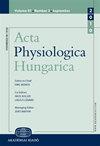Noscapine protects OLN-93 oligodendrocytes from ischemia-reperfusion damage: Calcium and nitric oxide involvement.
引用次数: 6
Abstract
This study was carried out to evaluate the effects of noscapine, a benzylisoquinoline alkaloid from opium poppy, on oligodendrocyte during ischemia/reperfusion-induced excitotoxic injury. Changes in intracellular calcium levels due to chemical ischemia and nitric oxide (NO) production during ischemia/reperfusion were evaluated as the hallmarks of ischemia-derived excitotoxic event. OLN-93 cell line (a permanent immature rat oligodendrocyte) was used as a model of oligodendrocyte. 30- or 60-minute-oxygen-glucose deprivation/24 hours reperfusion were used to induce excitotoxicity. MTT (3-[4,5-Dimethylthiazol-2-yl]-2,5-diphenyl-tetrazolium bromide) assay was used to evaluate cell viability. Ratiometric fluorescence microscopy using Ca(2+)-sensitive indicator Fura-2/AM was utilized to assess intracellular calcium levels. NO production was evaluated by Griess method. Noscapine (4 μM) significantly attenuated intracellular Ca(2+) elevation (P < 0.001). Also, noscapine significantly decreased NO production during a 30-minute oxygen-glucose deprivation/reperfusion (P < 0.01). The inhibitory effect of noscapine (4 μM) on intracellular Ca(2+) was greater than ionotropic glutamate receptors antagonists. Noscapine is protective against ischemia/reperfusion-induced excitotoxic injury in OLN-93 oligodendrocyte. This protective effect seems to be related to attenuation of intracellular Ca(2+) overload and NO production.诺斯平保护OLN-93少突胶质细胞免受缺血再灌注损伤:钙和一氧化氮的参与。
本研究探讨了罂粟苯基异喹啉生物碱诺斯卡平对缺血/再灌注诱导的少突胶质细胞损伤的影响。化学缺血引起的细胞内钙水平的变化和缺血/再灌注期间一氧化氮(NO)的产生被评估为缺血源性兴奋毒性事件的标志。以OLN-93细胞系(永久未成熟大鼠少突胶质细胞)作为少突胶质细胞模型。采用30或60分钟氧糖剥夺/24小时再灌注法诱导兴奋性毒性。采用MTT(3-[4,5-二甲基噻唑-2-基]-2,5-二苯基溴化四唑)测定法测定细胞活力。采用钙(2+)敏感指示剂Fura-2/AM的比例荧光显微镜评估细胞内钙水平。采用Griess法测定NO产量。Noscapine (4 μM)显著降低细胞内Ca(2+)升高(P < 0.001)。noscapine在30min氧糖剥夺/再灌注期间显著降低NO的产生(P < 0.01)。noscapine (4 μM)对细胞内Ca(2+)的抑制作用大于异离子型谷氨酸受体拮抗剂。诺斯平对缺血/再灌注诱导的OLN-93少突胶质细胞兴奋毒性损伤具有保护作用。这种保护作用似乎与细胞内Ca(2+)过载和NO产生的衰减有关。
本文章由计算机程序翻译,如有差异,请以英文原文为准。
求助全文
约1分钟内获得全文
求助全文

 求助内容:
求助内容: 应助结果提醒方式:
应助结果提醒方式:


